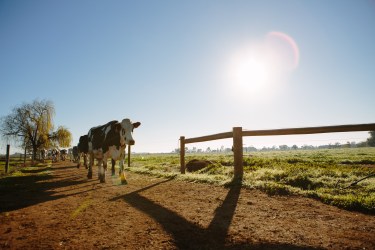By Andy Taylor
The output of grass per hectare is a key performance indicator (KPI) all businesses should be using, regardless of whether the field is used for grazing or silage. Reseeding is one of the most cost-effective methods of boosting grass output and reducing high input costs on an older ley.
Spring offers an optimum opportunity for reseeding, with increasing temperatures and suitable rainfall levels promoting the establishment of good swards.
Spring reseeding also means that there is plenty of opportunity to apply post-emergence spray for weed control and to achieve a good number of grazings ahead of the winter period.
When it comes to reseeding, there are five top tips to consider:
1. Identify poor yielding fields
It is worth identifying poor performing paddocks, both for overall yield and for their growth pattern. Measuring farm cover weekly will help you to identify these fields.
You can find the most value by reseeding underproductive paddocks, with the potential to increase yield by up 3 t/ha DM and utilise applied nutrients more efficiently – by up to 25%. Not forgetting that higher levels of palatability and digestibility will result in increased intakes, and therefore animal performance
2. Select the right reseed variety
No single grass variety has all the desired agronomic traits, thankfully a grass seed mix can address this. It is, however, important to make sure you are selecting the right grass seed mixture to suit your grassland regime.
You need to know what the field is going to be used for and what the farm’s reseeding targets are. With that information to hand, you can purchase the right seeds which will match your needs, soil type and farm location.
3. Sample your soils
It is important to get soil fertility right when reseeding, to ensure your plants are getting an adequate supply of nutrients. Strive for a target soil pH of at least 6.3 on mineral soils and 5.5 for peat soils. Soil P and K indexes must be at 3.
Whether it be pH issues, compaction or drainage, make sure that you are addressing any problems and evaluating the best approach to overcome these.
4. Consider your sowing method to allow seed germination
There are a number of reseeding methods available, and if done correctly then they can all be effective.
When sowing, keep coulters high (6-7cm) above the soil to scatter the seed, rather than sowing it in lines, to cover the ground and help tillering.
5. Don’t forget post-emergence weed control
As I have already briefly mentioned, weed control is an essential part of reseeding. Post-emergence spray should be applied 5-8 weeks after reseeding.
You must protect the sward in its first year and do not allow space for weeds to get into the swards.
Now is the time to get stuck in! Push the boat out and try to reseed as early as possible this spring. By doing so, you will have your first grazing earlier and will maximise the number of grazings.
A successful reseed will pay back faster, so it is very much worth putting a great deal of time and effort into the initial preparation time. Only by planning effectively and being organised, will you get the grass growth rates you are aiming for.








